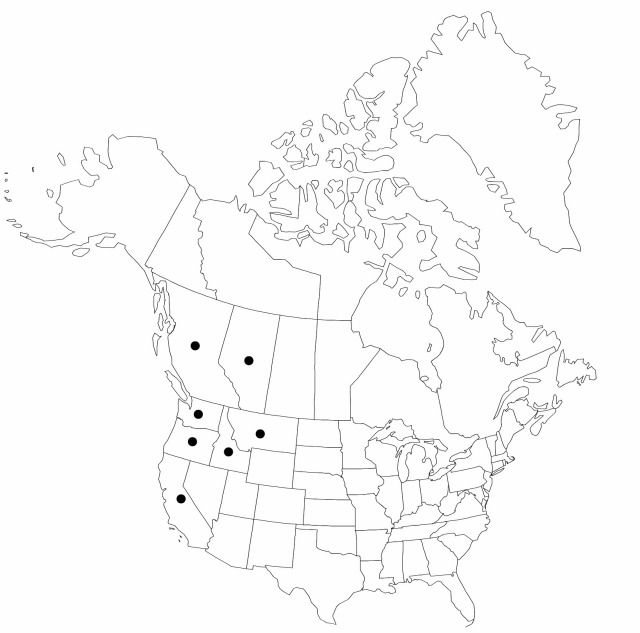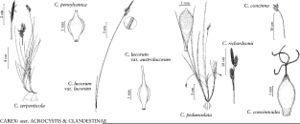Difference between revisions of "Carex concinnoides"
Bull. Torrey Bot. Club 33: 440. 1906.
FNA>Volume Importer |
FNA>Volume Importer |
(No difference)
| |
Revision as of 21:05, 16 December 2019
Plants loosely cespitose, long-rhizomatous. Culms 14–37 cm. Leaves: basal sheaths dark reddish brown; blades mostly basal, pale green, shorter than culms, thick, 1.7–4.5 mm wide. Inflorescences: peduncles of proximal spikes short; peduncles of terminal staminate spikes 1.5–3(–10) mm; proximal bracts short-sheathing; pistillate spikes 1–3, emerging from cauline nodes, aggregated, ascending, ovoid to short-cylindric; staminate spikes 8–22 × 1.8–3.1 mm. Scales: pistillate scales dark reddish brown, ovate to obovate, apex obtuse to acute, minutely ciliate; staminate scales dark reddish to purplish brown, ovate to obovate, margins white, apex acute, scarious. Anthers 1.9–3.1 mm. Perigynia ellipsoid to obovoid, 2.5–3 × 1.4–1.7 mm, base tapering, pubescent with straight white hairs; beak 0.5 mm. Stigmas 4, erect or convolute, thick, weakly papillose. Achenes obovoid, 1.9–2.5 × 1.3–1.6 mm.
Phenology: Fruiting spring–summer (late Apr–late Jul).
Habitat: Moist to dry, open pine, spruce, Douglas-fir, and aspen woods, often on slopes
Elevation: 60–2100 m
Distribution

Alta., B.C., Calif., Idaho, Mont., Oreg., Wash.
Discussion
Carex cocinnoides is the only North American sedge with four stigmas per pistil. It is most similar to C. richardsonii; differs in its more closely aggregated, short-pedunculate pistillate spikes with very short-sheathing bracts. These close relatives are sympatric only at the northern and eastern edge of the range of C. concinnoides.
Selected References
None.
